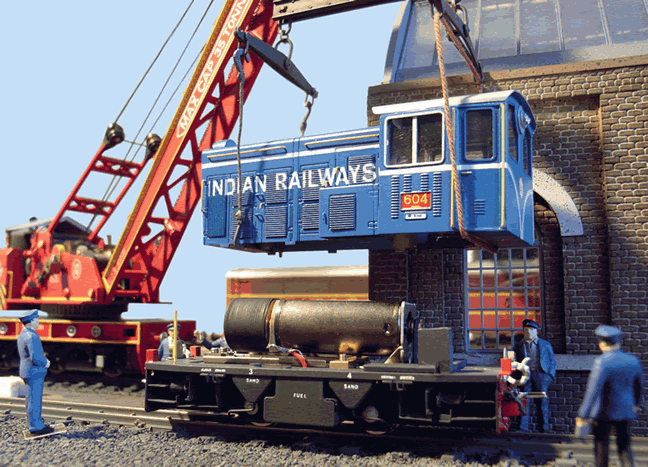

 |
 |
||
| 1. The ‘Bullant’ power unit, and the frames/spacer assembly A crosspiece has been added near the centre of the ‘Bullant’ which will rest on the two brackets near the centre of the frames. The cut-out in the frames is to engage with the plastic support on the motor unit which would normally locate a bogie sideframe; it will be hidden by the fuel tank. | The spacers have a hole front and rear through which the body fastening bolts will pass. I decided that the power unit would be installed with the flywheel to the front, to minimise protrusion into the cab, so I used the two mounting holes on the ‘Bullant’ (for which bolts are provided) for fastening to the front spacer. However, I did not wish to have the chassis and body supported as a cantilever from only one end of the power unit, so I added a brass cross arm to the top of power unit, under the motor, with tapped holes at each end. This rests on two brackets soldered to the inside of the frames and is secured by bolts from underneath. With this arrangement, the power unit is firmly connected by four bolts from underneath. | Above The breakdown crane (see CM November 2002) lifts the NDM6 body clear of the chassis to reveal the motor and flywheel. |
|
| Power
unit The frames |
 |
||
 |
2. A trial assembly of the frames, motor unit, footplate and cab, to ensure that all fits comfortably. The motor protrudes into the cab, but is below window level. | ||
| 3. The relationship of the frames to the footplate (with the fuel tanks fitted). The units will be connected together by bolts passing upwards through the holes at front and rear, into the body. |
|||
| December 2010 | 801 | ||
| Next Page | |||
|
|
|||